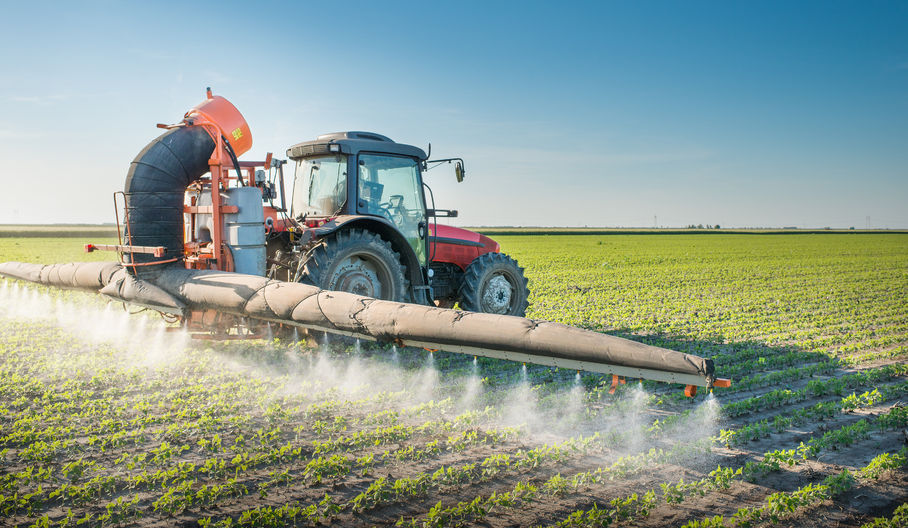 农药
农药
对食品需求的增长迫使生产者以最有效的方式保持其家畜和作物的质量。这可能涉及农药的使用。在作物上使用这些产品,有可能通过动物饲养或作物加工过程中的残留物,而将消费者暴露于有害的化学物质。限制这些残留物的最大残留限量以确保食物可供安全食用。

食品法典在农药中的作用
为了保护消费者的健康,大多数国家对食品中的农药残留物都规定了法定最大限量。国家间的限量差异有可能导致贸易困难。
农药残留法典委员会(CCPR) 负责为国际贸易中特定食品或特定类别的食品或饲料农药残留物制定法典最大残留限量。
在制定法典最大残留限量前,必须进行人体健康风险评估,以确保食品供应安全。粮农组织/世卫组织农药残留联席会议(JMPR) 世卫组织农药残留联席会议负责审查主要从规范试验中获得的 适当毒理学和数据,这些试验根据“良好农业规范”使用农药。粮农组织/世卫组织农药残留联席会议进行膳食风险评估,并向法典委员会建议特定的最大残留限量。
对于拟由粮农组织/世卫组织农药残留联席会议审议的化学品或商品,必须首先由农药残留法典委员会优先重点电子工作组的成员国提名。
相关食典文本
新闻

CCPR52 / Committee on pesticide residues approves new MRLs to CAC44
The Codex Committee on Pesticide Residues (CCPR)wrapped up its 52nd session advancing new Codex Maximum Residue Limits (MRLs) for spices, seeds, fruits, and other commodities to the 44th Session of the Codex Alimentarius Commission (CAC44). These limits for pesticide residues in food are established by Codex based on a risk assessment and limits for safe intake set by an FAO/WHO international expert scientific group named Joint FAO/WHO Meeting on Pesticide Residues (JMPR).
Gracia Brisco, the Food Standards Officer in the Codex [...]
23 August 2021

CCPR52 / "A sound, open and reliable international system" – Prof QIAO chairs CCPR
As the Codex Committee on Pesticide Residues (CCPR) continues virtually, we spoke to Xiongwu QIAO, Chairperson of CCPR. Professor QIAO is Counsellor of the Government of Province Shan, People’s Republic of China.
Chairperson QIAO, thanks for your time. Let’s start with the million-dollar question. What are pesticides and how are they used?
Pesticide means any substance intended for preventing, destroying, attracting, repelling or controlling any pest including unwanted species of plants or animals during the production, storage, transport, distribution and processing of [...]
28 July 2021

Pesticide residues / Training in Chile strengthening expertise in the region
Pesticides are potentially toxic to humans and especially for those who work or come into close contact with them. Yet pesticides also play a key role in food production; protecting or increasing yields and the number of times per year a crop can be grown on the same land. This is particularly important in countries that face food shortages.
FAO and WHO are responsible for assessing the risks to humans of pesticides – both through direct exposure, and through residues in [...]
21 February 2020

Codex looks to harmonise regulation of biopesticides
Experts meeting in Macau, China 8 to 12 April 2019, will be discussing a proposal to provide an international reference guideline for biopesticides. The project would establish criteria to identify pesticides that generally pose fewer risks than conventional pesticides and are considered by many national regulators exempt from the need to set maximum residue limits.
This Codex guideline would help countries such as Chile, which is leading the work, as they and many other countries base their regulations on the Codex [...]
06 April 2019

Pesticide experts meet to support Codex work
The FAO/WHO Joint Meeting on Pesticide Residues (JMPR) is currently underway at the Federal Institute for Risk Assessment in Berlin, Germany. Dr Roland Solecki, Head of the Department of Pesticides Safety of the Federal Institute hosting the event, highlighted the importance of JMPR’s work in supporting the Codex Committee on Pesticide Residues (CCPR) with scientific advice. He also noted its valuable contribution to enhancing collaboration between national and international organizations to assess the risk of pesticide residues in foods.
This is [...]
21 September 2018

Pesticide Residues 50th session in Haikou China
Experts gather in Haikou, China to establish maximum limits for pesticide residues in food and feed.
The 50th session of the Codex Committee on Pesticide Residues began on Monday 9 April in Haikou, China and concludes Friday.
Since 1966 the committee has established over 5000 Maximum Residue Limits (MRLs) for pesticide residues covering 303 pesticides. Pesticides are used to protect crops against insects, weeds, fungi and other pests. Pesticides are potentially toxic to humans and can have both acute and chronic health [...]
10 April 2018
关键事实
- 食品法典规定了食品和饲料作物中农药的最大残留限量,以提供食品安全标准和促进国际贸易。粮农组织和世卫组织还制定了农药规格,以确定农药质量标准,保护消费者和环境免受不合格产品的危害。
- 食品法典已经制定了超过 4300项最大残留限量,涵盖近200 种农药。
- 粮农组织倡导将病虫害综合治理(IPM)作为病虫害管理的首选方法。
- 粮农组织和世卫组织鼓励执行 《国际农药管理行为守则》。
农药立法和标签
Harry Van der Wulp解释了如何通过更新关于农药立法的准则,以强调农药管理不仅影响农业,还涉及卫生和环境部。


